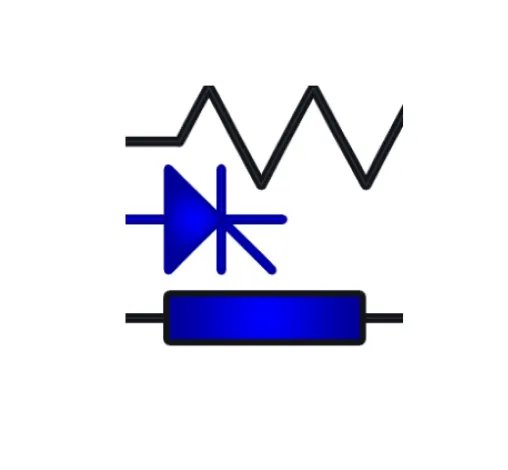4 Results for the search "LIOV":
Indirect-Lightning Performance of Overhead Distribution Networks With Complex Topology
Description:
The paper deals with the evaluation of the indirect-lightning performance of overhead distribution networks. The novelty of this contribution is that it takes into account the inherent complexity of d... see moreistribution networks. These networks are indeed characterized by a plurality of lines (main feeder and laterals) and also by the presence of typical power components (e.g., transformers and surge arresters); they consequently differ considerably from the straight line configuration generally adopted in this type of studies.
To accomplish such an evaluation we have extended the general procedure already presented in a previous paper based on the use of the LIOV code along with the Monte Carlo method. The extended procedure combines the advantage of the LIOV-EMTP computer code—that allows the calculation of lightning-induced voltages in complex distribution networks—with a heuristic technique specifically developed and integrated in the Monte Carlo routine in order to reduce the computational effort. The application of the proposed procedure to a set of distribution overhead networks characterized by different topologies, but all of the same length, shows that, in general, the usual single straight-line approach may result into a misestimation of the indirect-lightning performance. The paper also analyzes and discusses the influence of both the line terminations, and the position of the line poles.
Authors: Alberto Borghetti, Senior Member, IEEE, Carlo Alberto Nucci, Fellow, IEEE, and Mario Paolone, Member, IEEE
IEEE TRANSACTIONS ON POWER DELIVERY, VOL. 24, NO. 4, OCTOBER 2009
Tag(s): LIOV-EMTP, lightning-induced overvoltages, lightning performance, power quality, distribution systems, overhead power lines.
AN ADVANCED INTERFACE BETWEEN THE LIOV CODE AND THE EMTP-RV
Description:
Accurate evaluation of the response of overhead distribution lines to lightning electromagnetic pulse (LEMP) represents an important aspects in insulation coordination of distribution network. The imp... see morerovements of the accuracy of such an analysis call for the extension of the field-to-transmission line coupling models from single straight lines to multi-conductor/branched and complex systems. This paper deals with the description of a new interface between the LIOV (Lightning Induced OverVoltage) code and the EMTP-RV software. In particular, the paper illustrates the treatment of the boundary conditions – on which the link with the Augmented Nodal Analysis Technique adopted by the EMTP-RV is based – together with the main aspects related to the numerical integration of the Agrawal and al. LEMP-to-transmission line coupling model adopted in the LIOV code.
The proposed interface aims at improving the simulation capabilities of the previous version of the LIOV-EMTP, namely this new version completely removes the disadvantage of the time-delay associated to the use of a short Bergeron’s line needed to link the LIOV code with the EMTP. Additionally, this new version of the LIOV-EMTP code takes advantages of the Augmented Nodal Analysis Technique implementation in EMTP-RV. Comparison with experimental results is also presented in order to verify the accuracy of the proposed interface.
Authors: A. Borghetti, F. Napolitano, C.A. Nucci, M. Paolone, J. Masheredjian, F. Rachidi
29th Conference on Lightning Protection 23rd – 26th June 2008 Uppsala, Sweden
VOLTAGE TRANSIENTS IN A DISTRIBUTION NETWORK CORRELATED WITH EVENTS IDENTIFIED BY A LIGHTNING LOCATION SYSTEM
Description:
Monitoring units for the measurement of high frequency voltage transients have been in operation at three different busses of an Italian medium voltage (MV) distribution feeder, mainly composed by ove... see morerhead lines, in March 2007 – August 2008. The feeder is located in a region characterized by a high ground flash density value (4 flashes/km2/yr); many of the recorded voltage transients may be correlated with the lightning events detected for the same region by the Lightning Location System (LLS) CESISIRF. The paper presents some experimental results obtained using the monitoring units and their comparison with computer results obtained using a LIOV-EMTP model of the considered MV feeder. A procedure aimed at achieving the best fit between measurements and calculations, which takes into account the uncertainties associated with LLS data, is also presented.
Authors:A. Borghetti, F. Napolitano, C.A. Nucci, M. Paolone, M. Bernardi, W. Schulz
X International Symposium on Lightning Protection, 9th-13th November, 2009 – Curitiba, Brazil
Tag(s): Lightning, distribution network, LIOV, EMTP
Interaction Between Grounding Systems and Nearby Lightning for the Calculation of Overvoltages in Overhead Distribution Lines
Description:
The aim of the paper is to analyze overvoltages in overhead distribution lines induced by nearby lightning return stroke currents taking into account also the conductive coupling between the lightning... see more current injected into the soil and the line’s grounding system. Experimental results obtained in 2003 at the International Center for Lightning Research and Testing (ICLRT) in Florida have shown that significant currents were coupled with an overhead experimental line through its grounding system by nearby rocket-triggered lightning.
The paper first proposes a conductive coupling model between the lightning current injected into the soil and the nearby line grounding system, then presents the incorporation of such a model into the LIOV-EMTP computer code. The paper finally presents an experimental validation of the proposed models by making reference to results obtained during the above-mentioned triggered-lightning campaign.
Authors: F. Napolitano, M. Paolone, A. Borghetti, C.A. Nucci, F. Rachidi, V.A. Rakov, J. Schoene and M. A. Uman
Tag(s): lightning induced overvoltages, grounding systems, overhead distribution lines, lightning protection.
